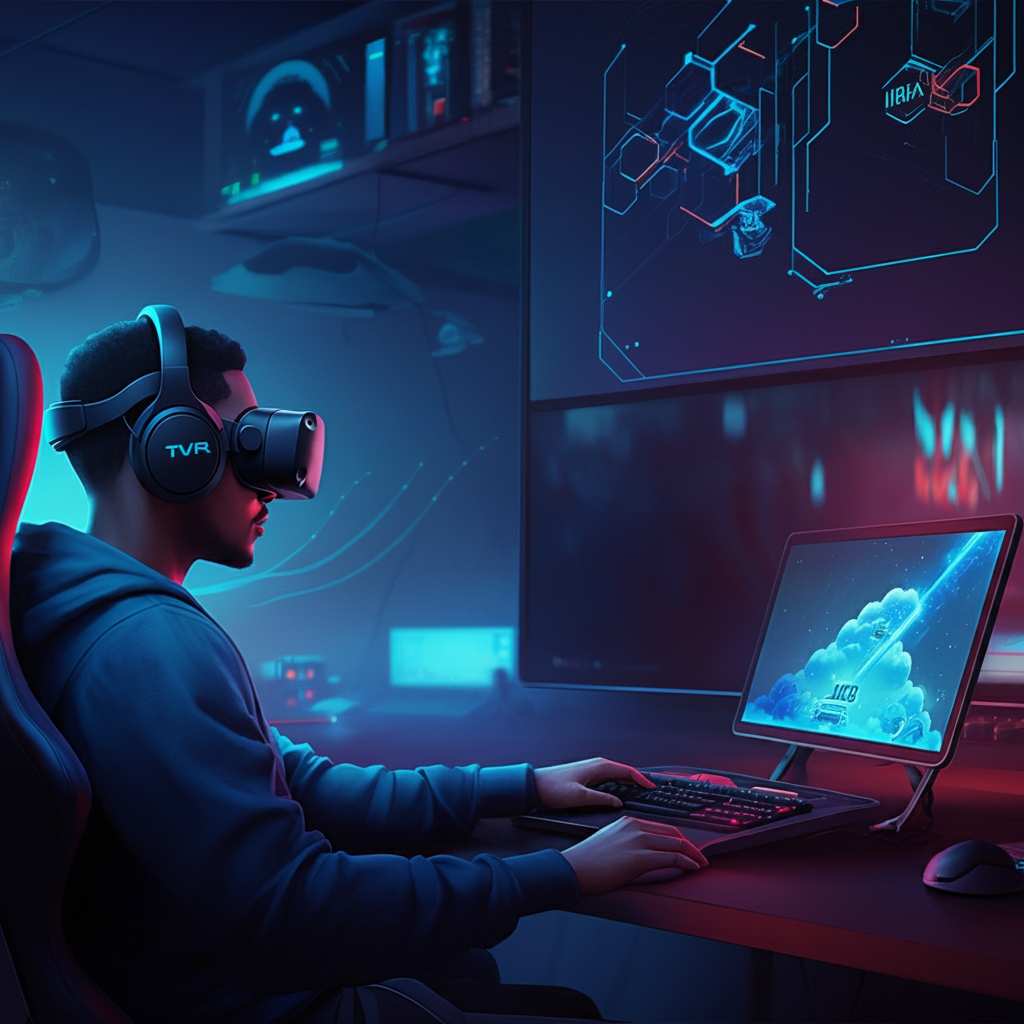The integration of virtual reality (VR) with cloud gaming is poised to significantly impact the landscape of competitive gaming, introducing new opportunities and challenges. This fusion of technologies combines the immersive experiences of VR with the flexibility and accessibility of cloud gaming, potentially transforming how competitive games are played, accessed, and enjoyed.
Cloud gaming allows players to stream games from remote servers rather than relying on local hardware, making high-quality gaming experiences more accessible to a broader audience. When combined with VR, this technology enables players to enjoy immersive, three-dimensional gameplay without the need for powerful local systems. This can democratize access to VR gaming, as players can experience high-fidelity VR games on less advanced hardware, relying on cloud services to handle the processing.
One of the major implications of integrating VR with cloud gaming is the potential for increased accessibility and inclusivity in competitive gaming. Players who may not have access to high-end VR equipment can still participate in competitive VR games through cloud gaming services. This can lead to a more diverse player base and more inclusive competitive scenes, as geographical and financial barriers are reduced. The ability to stream VR games also means that competitive gaming can reach new markets and audiences, expanding the global reach of esports.
However, integrating VR with cloud gaming also presents several challenges. One of the primary concerns is latency. In competitive gaming, especially in VR, low latency is crucial for ensuring a smooth and responsive experience. Cloud gaming relies on stable and high-speed internet connections to minimize lag and latency. Any delays in streaming or processing can adversely affect gameplay and performance, potentially disadvantaging players who are using cloud-based VR systems. Ensuring that cloud gaming services provide sufficient performance and minimal latency is essential for maintaining the integrity of competitive play.
Another consideration is the quality of the VR experience in a cloud gaming context. While cloud gaming can make VR more accessible, it also raises questions about the consistency and fidelity of the experience. Streaming VR content requires high bandwidth and effective compression techniques to deliver a high-quality visual and sensory experience. If not properly managed, the quality of the VR experience could be compromised, impacting player satisfaction and competitive fairness.
The integration of VR with cloud gaming also opens up new possibilities for game developers and publishers. With cloud-based VR, developers can create more ambitious and complex VR experiences without being constrained by the hardware limitations of individual players. This can lead to the development of more innovative and engaging competitive games, pushing the boundaries of what is possible in VR gaming. Additionally, cloud gaming platforms can offer new features such as dynamic updates and real-time content delivery, enhancing the competitive gaming experience with regular content updates and live event integration.
From a spectator’s perspective, the integration of VR and cloud gaming can also enhance the viewing experience. Fans can potentially stream VR esports events in high definition from anywhere, offering a more immersive and engaging way to follow competitive matches. This could increase viewership and engagement, providing new opportunities for broadcasters and sponsors to connect with audiences.
In summary, the integration of VR with cloud gaming has significant implications for competitive gaming, offering increased accessibility and new opportunities for innovation while also presenting challenges related to latency and experience quality. As these technologies continue to evolve, they are likely to reshape the competitive gaming landscape, influencing how games are played, accessed, and experienced on a global scale.

